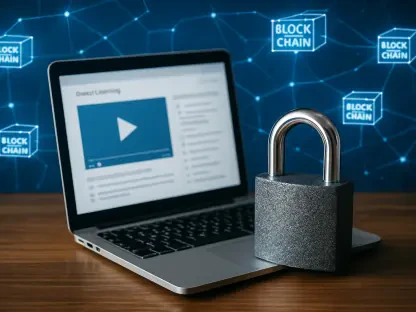The healthcare education sector is experiencing an unprecedented evolution, driven by the intersection of technological innovation and an escalating demand for skilled medical professionals across the globe. With an aging population and a rising tide of chronic conditions such as diabetes and cardiovascular diseases, the need for a robust, adaptable workforce has reached critical levels. Technology stands at the forefront of this transformation, offering groundbreaking tools that not only enhance the accessibility of education but also elevate the quality of training provided to healthcare workers. From virtual simulations to digital learning platforms, these advancements are dismantling traditional barriers, enabling continuous skill development in a field that demands precision and adaptability. This exploration delves into the profound ways technology is reshaping the landscape of healthcare education, addressing both the challenges and opportunities that lie ahead in meeting global health demands.
The Power of Immersive Technologies in Training
Transforming Skills with Virtual Reality (VR) and Augmented Reality (AR)
The advent of virtual reality (VR) and augmented reality (AR) has ushered in a new era of experiential learning for healthcare professionals, creating environments where theoretical knowledge meets practical application without real-world risks. These technologies simulate complex medical scenarios, allowing trainees to perform virtual surgeries or diagnose intricate conditions in a controlled, immersive setting. Such tools are invaluable for building confidence and competence, particularly in high-pressure situations like emergency responses or delicate procedures. By replicating the nuances of patient interactions and anatomical details, VR and AR ensure that learners are better prepared for the unpredictability of clinical environments, significantly reducing the learning curve when transitioning to actual patient care.
Beyond individual skill-building, VR and AR foster collaborative learning by enabling team-based simulations that mirror real-life hospital dynamics. Medical teams can practice coordinated responses to crises, refining communication and decision-making under simulated stress. This approach not only sharpens technical abilities but also enhances soft skills critical for patient outcomes, such as empathy and teamwork. As these technologies become more accessible through reduced costs and wider adoption, their integration into curricula is poised to become standard, ensuring that healthcare education remains aligned with the fast-evolving demands of modern medicine.
Enhancing Mastery Through Simulation-Based Learning
Simulation-based learning, encompassing a spectrum of tools from high-fidelity mannequins to computer-generated models, offers a complementary avenue for skill development in healthcare education. Unlike traditional classroom methods, this approach allows repeated practice of intricate techniques, such as intubation or wound suturing, without ethical concerns or patient safety risks. Learners can make mistakes, analyze outcomes, and refine their methods in a safe space, which is particularly crucial for mastering procedures that require precision and speed. This repetitive, hands-on experience builds muscle memory and critical thinking, ensuring that healthcare workers are equipped to handle real-world challenges with greater assurance.
Moreover, simulation-based learning extends its benefits to interdisciplinary training, where diverse healthcare roles come together to navigate simulated emergencies or patient care scenarios. This method cultivates a deeper understanding of each team member’s responsibilities, fostering seamless collaboration in high-stakes environments. By integrating realistic feedback mechanisms, such as performance analytics or instructor evaluations, simulations provide actionable insights that drive continuous improvement. As technology advances, the realism and scope of these tools are expected to expand, further embedding them as a cornerstone of effective healthcare training programs.
Digital Platforms and Their Role in Accessibility
Revolutionizing Reach with E-Learning Solutions
E-learning has emerged as a transformative force in healthcare education, breaking down geographical and logistical barriers to provide scalable, cost-effective training solutions to professionals worldwide. Digital platforms, including online courses and virtual classrooms, enable learners in remote or underserved regions to access high-quality resources that were once out of reach due to distance or financial constraints. This democratization of education is vital for addressing global workforce shortages, particularly in areas where healthcare needs are most acute. By offering a vast array of specialized content, from public health strategies to surgical techniques, e-learning ensures that diverse learner needs are met with flexibility and precision.
Additionally, the scalability of e-learning platforms allows educational providers to reach larger audiences while maintaining lower operational costs compared to traditional in-person training. This efficiency attracts investment and innovation, leading to the development of sophisticated features like interactive quizzes, live webinars, and peer forums that enhance engagement. The impact of this shift is profound, as it not only upskills existing professionals but also draws new talent into the healthcare field by lowering entry barriers. As digital infrastructure continues to improve globally, the influence of e-learning on workforce development is set to grow, reshaping how knowledge is disseminated in the medical community.
Empowering Flexibility Through Mobile Learning Tools
Mobile learning solutions, such as dedicated apps and podcasts, cater to the demanding schedules of healthcare professionals by delivering education in bite-sized, on-the-go formats. These tools enable learners to absorb critical updates or refresh skills during brief windows of availability, whether during a commute or a short break between shifts. The convenience of accessing content anytime, anywhere addresses one of the most significant challenges in the field—time scarcity—while ensuring that continuous learning remains a feasible priority. This adaptability is especially beneficial for practitioners in fast-paced environments who must stay abreast of evolving medical guidelines and technologies.
Furthermore, mobile learning platforms often incorporate gamification and microlearning strategies to boost retention and motivation among users. Features like progress tracking, quick assessments, and personalized content recommendations transform education into an engaging, interactive experience rather than a burdensome task. This approach appeals to a broad spectrum of learners, from students embarking on their medical journeys to seasoned professionals seeking recertification. As mobile technology becomes increasingly ubiquitous, its role in facilitating accessible, efficient healthcare education will likely deepen, supporting a more agile and informed workforce.
Policy and Investment Fueling Technological Integration
Regulatory Frameworks Supporting Digital Adoption
Government policies and regulatory mandates are playing a pivotal role in accelerating the integration of technology into healthcare education, ensuring that training aligns with the evolving standards of medical practice. Stricter certification requirements and continuing education obligations compel institutions to adopt digital tools that can deliver updated, compliant content efficiently. These regulations are often backed by global health initiatives, such as those promoting universal health coverage, which prioritize workforce development through accessible, tech-driven programs. The result is a structured push toward modernization, ensuring that healthcare professionals remain equipped to handle contemporary challenges with the latest knowledge and skills.
In addition, regulatory bodies are increasingly collaborating with tech developers to establish guidelines that ensure the quality and security of digital learning platforms. This partnership helps address concerns such as data privacy and content accuracy, fostering trust among educators and learners alike. By setting clear benchmarks, these frameworks encourage broader adoption of innovative tools, from AI-driven assessments to virtual simulations. As policies continue to evolve in response to technological advancements, their influence will likely sustain the momentum of digital transformation in healthcare education over the coming years.
Financial Support and Global Health Priorities
Rising global healthcare expenditure is translating into significant financial support for technology-enhanced education, creating opportunities for program development and workforce upskilling. Governments and private entities are channeling funds into initiatives that integrate digital solutions, recognizing that a well-trained workforce is fundamental to improving health outcomes. This investment facilitates the creation of cutting-edge tools and platforms, ensuring that educational content remains relevant amid rapid advancements in medical technology. Particularly in regions with stark healthcare disparities, such funding is crucial for bridging gaps and building capacity through accessible training.
Moreover, global health priorities, such as addressing workforce shortages and preparing for future crises, are driving targeted investments in tech-based education. The lessons learned from past health emergencies, like the rapid shift to telehealth during pandemics, have underscored the need for flexible, scalable learning systems. Financial backing for these initiatives often comes with a focus on sustainability, encouraging long-term strategies that leverage data analytics to optimize educational outcomes. As this trend of increased funding persists, it promises to further embed technology as an indispensable component of healthcare training, paving the way for a more resilient global health infrastructure.
Reflecting on Technological Milestones
Looking back, the journey of technology in healthcare education reveals a landscape dramatically altered by digital innovation and immersive tools that address critical gaps in training and accessibility. Virtual reality and augmented reality have redefined skill acquisition, while simulation-based learning has provided safe, repeatable practice environments that hone expertise. E-learning platforms and mobile tools have dismantled barriers of distance and time, ensuring that education reaches even the most remote corners of the globe. Regulatory support and financial investments have acted as catalysts, embedding these advancements into mainstream curricula. Moving forward, stakeholders must prioritize the continuous refinement of these technologies, focusing on affordability and inclusivity to ensure no region or learner is left behind. Emphasizing partnerships between tech developers, educators, and policymakers will be key to sustaining this momentum, ultimately building a healthcare workforce ready to tackle tomorrow’s challenges with unmatched proficiency.









